When comparing the Akita vs Rottweiler, you’re looking at two powerful, intelligent, and fiercely loyal breeds known for their guarding instincts and devotion to their families. Both dog breeds thrive when given a purpose. However, their personalities differ in key ways that might make one a better fit for your lifestyle than the other.
The Akita is a strong-willed, independent breed with a noble presence and a natural instinct to protect. Known for being aloof with strangers and territorial, the Akita requires an experienced owner who can handle its assertive nature.
On the other hand, the Rottweiler is affectionate, calm, and responsive, often thriving in a family environment—even with children—thanks to its gentle but protective demeanor.
In this blog, we’ll break down the differences between these two powerful breeds to help you decide which one suits your home and heart best.
Akita vs. Rottweiler
The Akita hails from the snowy mountains of northern Japan and has long been revered as a symbol of protection and loyalty. Once used for hunting and fighting, this breed was officially recognized as a “natural monument” by the Japanese government in 1931.
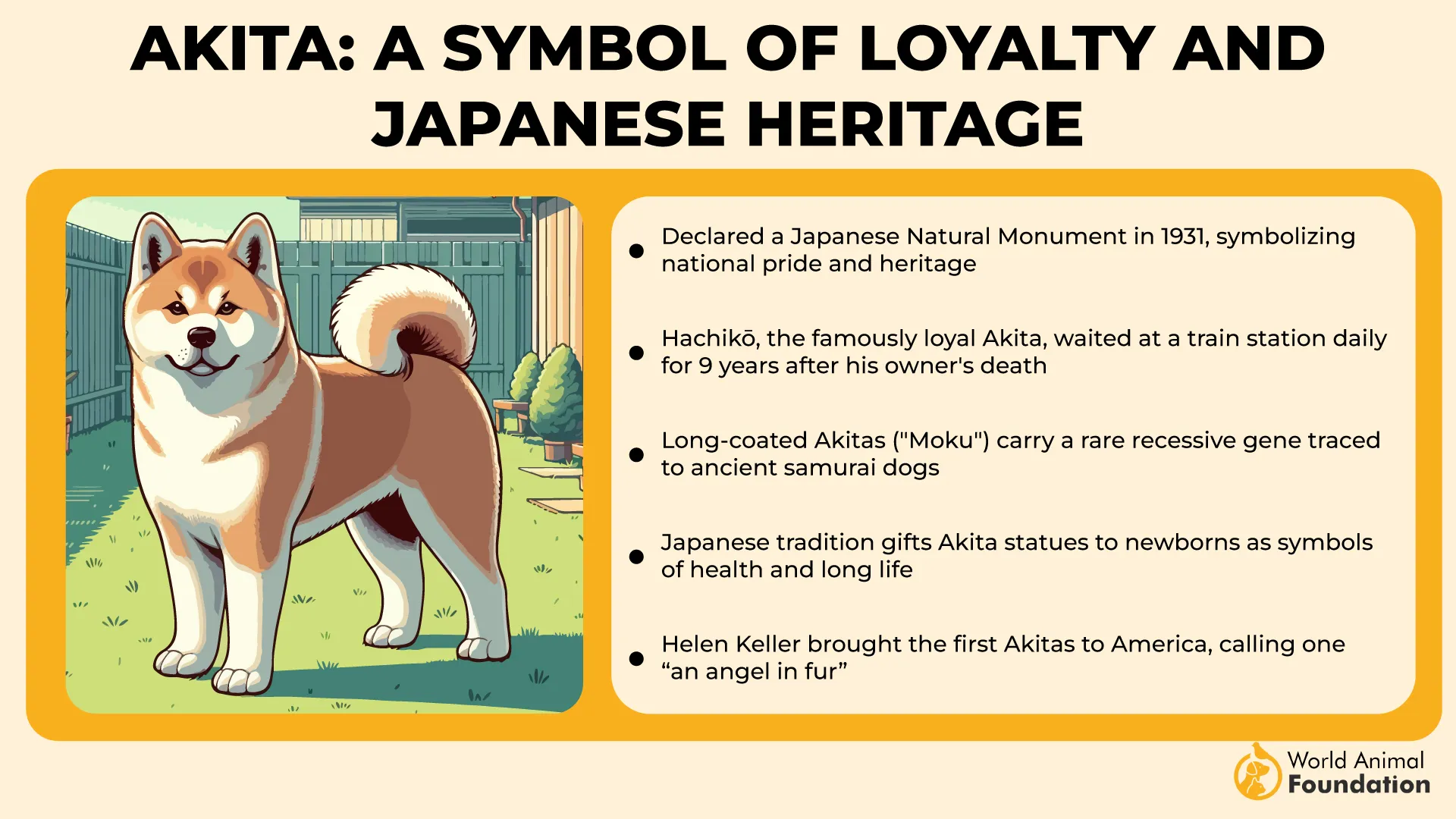
Powerful and imposing, the Akita features a broad head, small pointed ears, and a thick, curved tail. Its striking appearance is enhanced by a variety of coat colors, including brindle, pinto, and pure white, with most Akitas displaying a signature dark mask. Bred for strength and endurance, Akitas are now commonly trained for police and as guard dogs.
The Rottweiler, on the other hand, traces its lineage back to ancient Roman drover dogs and earned its name from the German town of Rottweil. Originally used to herd cattle and guard money for traveling butchers—earning it the nickname “the Butcher’s Dog”—the Rottweiler is deeply rooted in utility and loyalty.
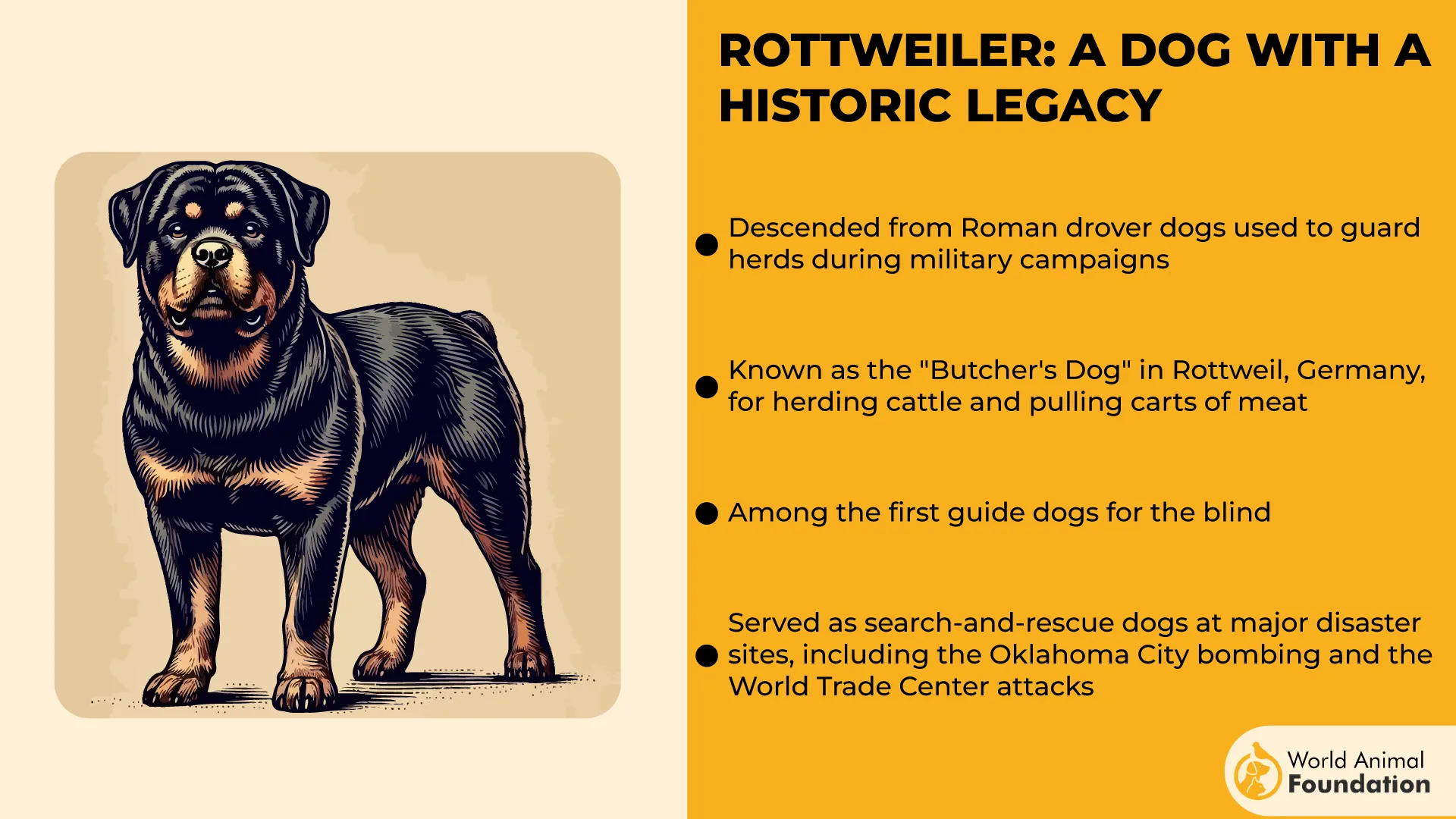
Though the breed nearly disappeared in the 19th century, it resurged as a valued worker in police, military, and even therapy roles. With its solid frame, confident posture, and calm temperament, the Rottweiler remains a favorite for families seeking a devoted companion and great watchdog.
Akita vs. Rottweiler: Size
The Akita is a large and powerful dog with a striking, foxlike face, pointed triangular ears, and a thick, plush double coat. One of its most distinguishing features is its curled, fluffy tail carried proudly over its back.
Unlike its smaller cousin, the Shiba Inu, the Akita is a true heavyweight, standing between 24 to 28 inches tall and weighing anywhere from 70 to 130 pounds. The American Akita is relatively larger than the Japanese Akita. This substantial size, combined with its dignified presence, makes the Akita both an imposing and elegant figure.
The Rottweiler (affectionately called Rotties) is similarly robust, built with a muscular frame and a broad, confident stance. Standing between 22 to 27 inches tall and weighing 80 to 135 pounds, Rottweilers are solid and compact, exuding strength.
Females are typically smaller and more refined in build than males, but all Rottweilers carry a commanding presence. While slightly shorter on average than the Akita, the Rottweiler often outweighs it, especially in the male range.
Akita vs. Rottweiler: Fur
The Akita boasts a dense, double-layered coat that ranges from short to medium in length. Its plush undercoat is soft and thick, providing excellent insulation in cold weather, while the outer coat—made up of slightly longer, coarser guard hairs—adds protection and structure.
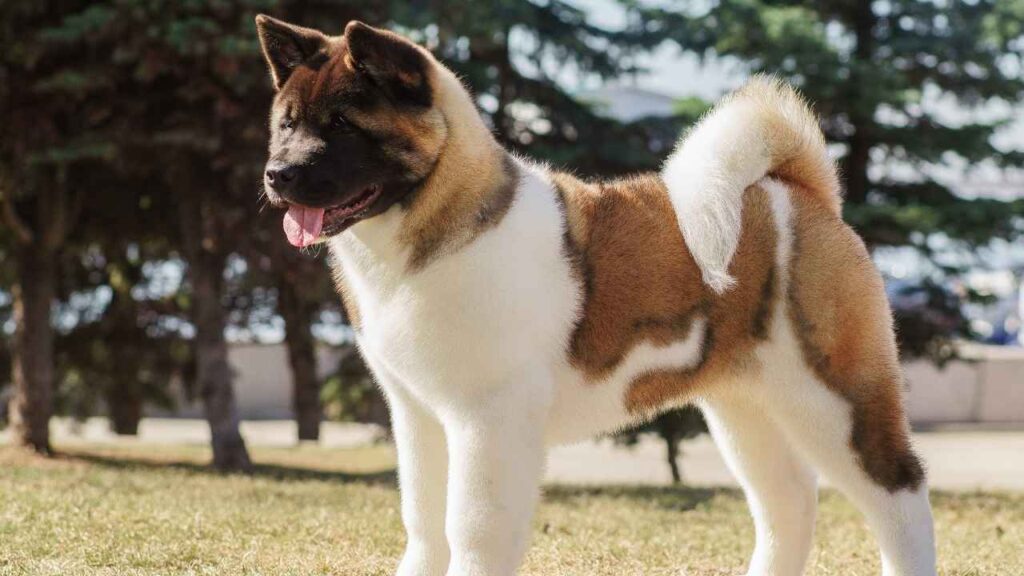
Though most Akitas have standard-length coats, some display long hair, which, while not show-appropriate, adds to their visual appeal. Akitas come in a variety of bold, clear colors, including white (without a mask), brindle, and pinto, the latter featuring a white base with large patches of color.
In contrast, the Rottweiler has a short, straight coat that lies flat and close to the body. Like the Akita, it also has a double coat, though the Rottweiler’s undercoat is only present on specific areas like the neck and thighs and is not visible through the coarse outer layer.
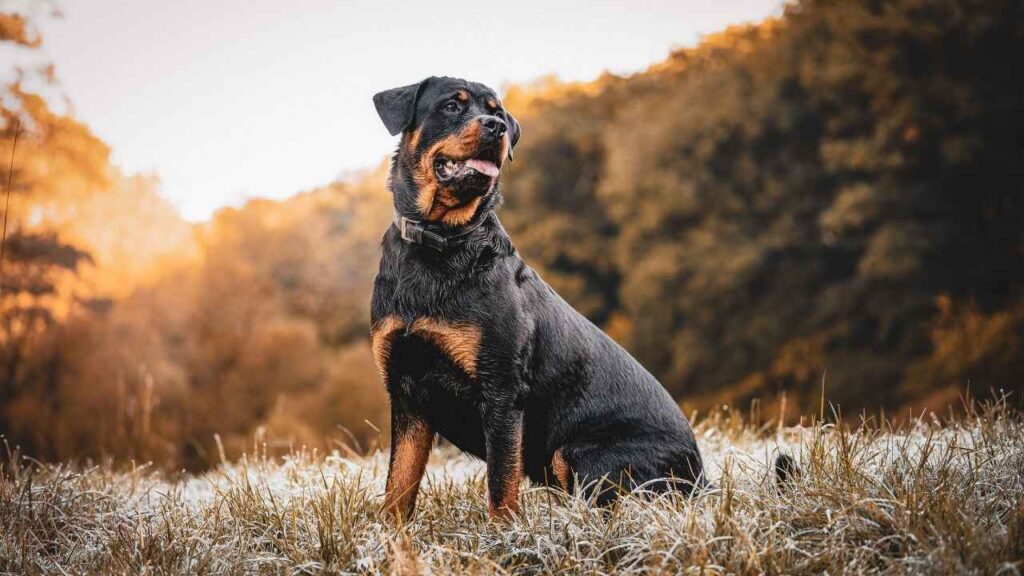
The breed’s classic black coat is marked with tan to mahogany accents on the face, chest, and legs. Any long or overly wavy coat is considered undesirable by show standards, keeping the Rottweiler’s appearance sleek and work-ready.
Akita vs. Rottweiler: Appearance
The Akita is a large, muscular dog with a dignified and commanding presence. Its broad head is complemented by small, erect, triangle-shaped upright ears and a large, curled tail that rests over the back or flank.
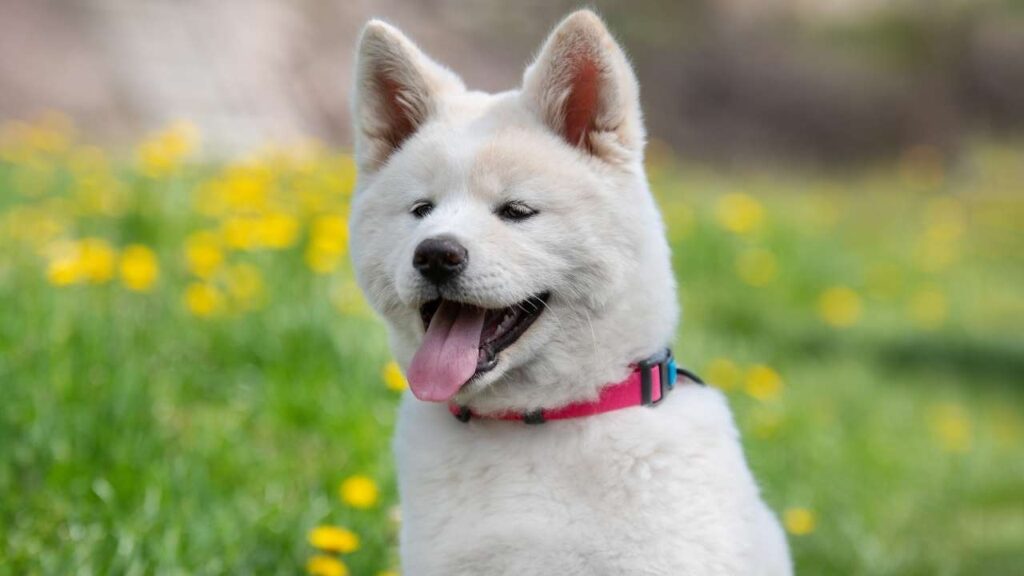
The Akita’s thick coat comes in a range of bold colors, including white, brindle, and pinto, with all but the white Akitas featuring a distinct dark mask around the muzzle. This breed’s impressive stature, strong build, and striking markings give it a regal and powerful appearance.
The Rottweiler, by contrast, has a more compact yet equally powerful build. With a sturdy, well-proportioned frame and a sleek, shiny coat, the Rottweiler exudes strength, endurance, and agility.
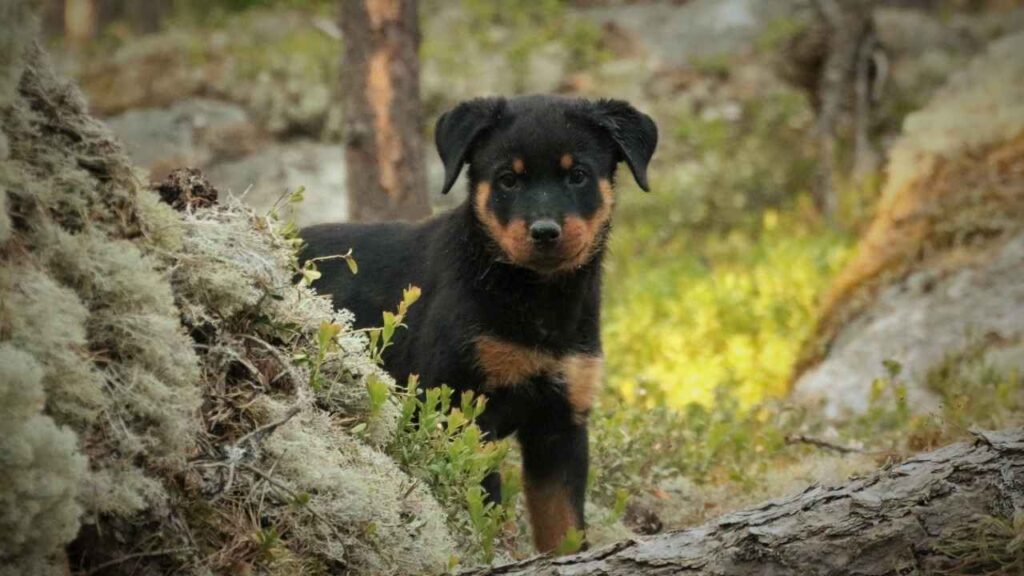
As noted by Purina, its coat is predominantly black with clearly defined rust-colored markings above the eyes, on the cheeks, muzzle, chest, and legs—often likened to expressive eyebrows and socks. The Rottweiler’s robust form and confident stance make it instantly recognizable and visually impressive.
Akita vs. Rottweiler: Lifespan
The Akita generally has a lifespan of 10 to 14 years, making it a relatively long-lived large breed with proper care and a healthy lifestyle.
The Rottweiler, on the other hand, typically lives 9 to 10 years, though attentive care and regular veterinary checkups can help maximize its lifespan.
Akita vs. Rottweiler: Temperament
The Akita is alert, courageous, and deeply loyal to its family, often bonding closely with one household while remaining aloof or wary of strangers. Calm and serious, Akitas aren’t very playful as adults except with trusted people. The American Kennel Club (AKC) describes this breed as “dignified, courageous, profoundly loyal.”
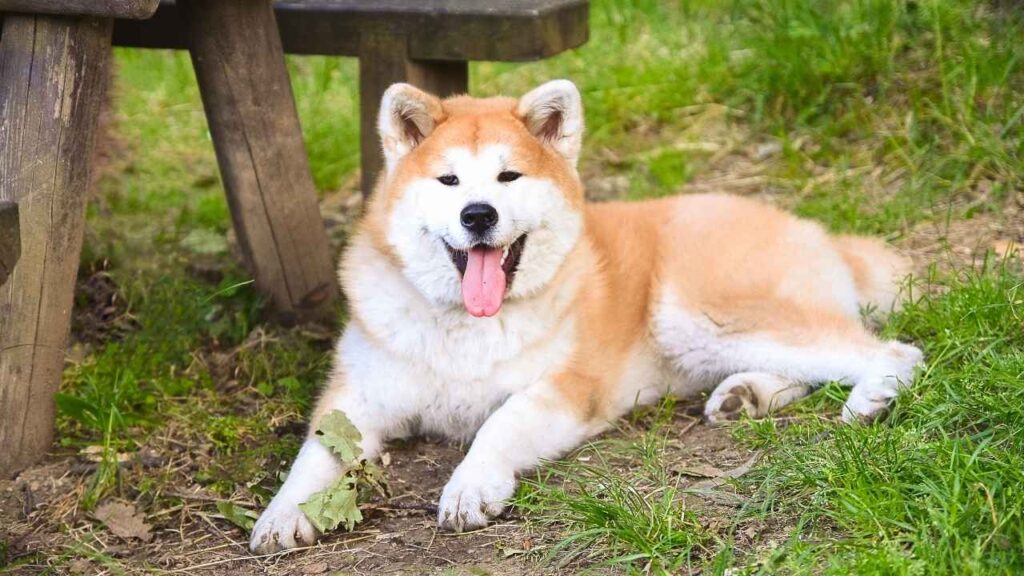
Their strong protective instinct can lead to misinterpreting harmless actions as threats, so they must be properly socialized from a young age. While not excessive barkers, their independence and strength can pose challenges for novice owners or families with small children. Akitas are intelligent but often stubborn, requiring patient, consistent training.
The Rottweiler is loyal, intelligent, and protective, with a calm and serious demeanor in adulthood. It tends to be more trainable than the Akita but may still show stubbornness when uninterested. Naturally reserved with strangers and potentially dog aggressive towards unfamiliar or same-sex dogs, Rottweilers benefit from early socialization and structure, according to Britannica.
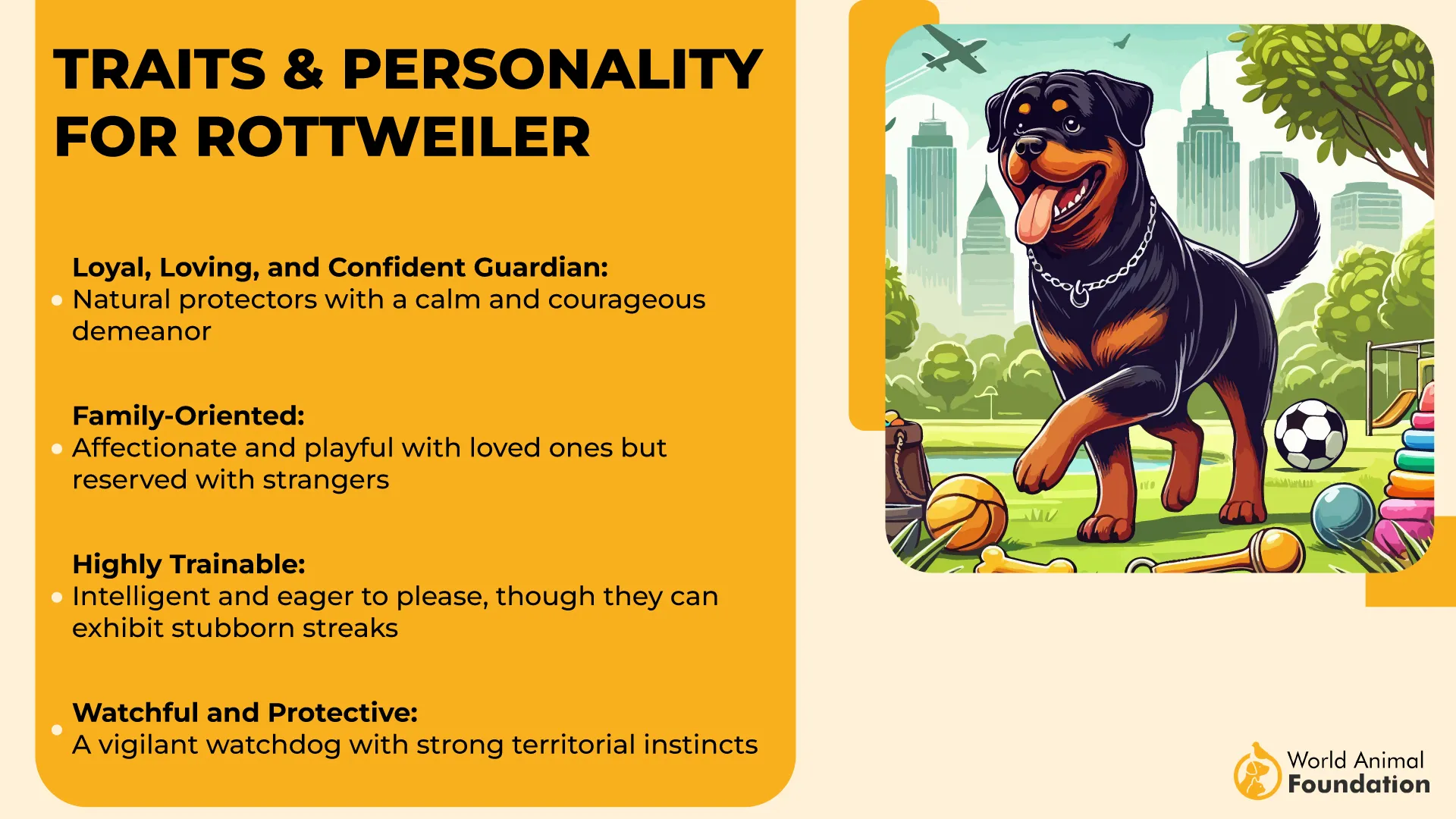
Though generally not aggressive, their strength and guarding instincts require responsible ownership and consistent training sessions to ensure safe, well-balanced behavior.
Akita vs. Rottweiler: Grooming Needs
The Akita is a relatively low-maintenance breed when it comes to grooming, thanks to its naturally clean habits and minimal odor. Its thick, double-layered coat should be brushed at least once a week to maintain its health and appearance.
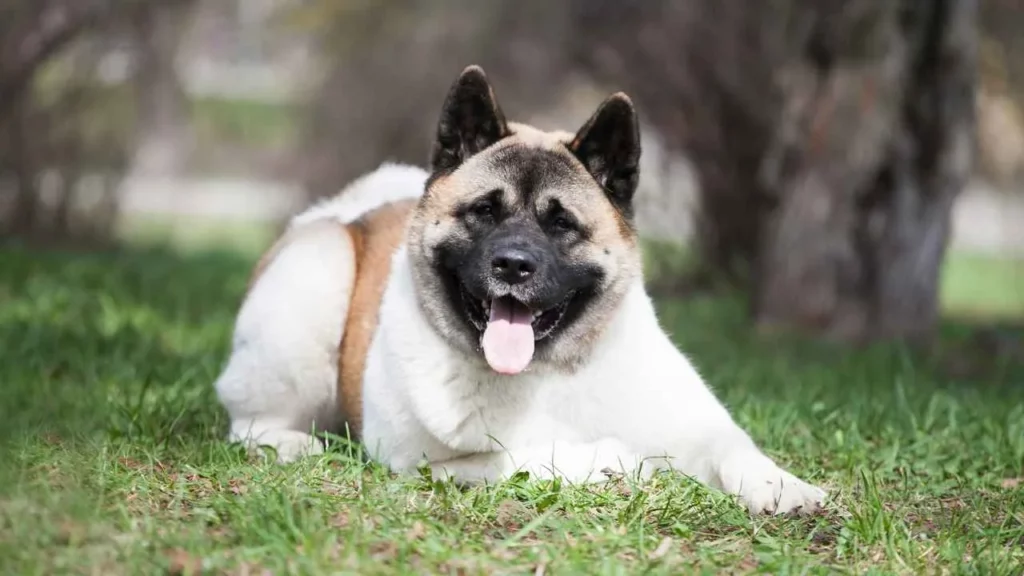
While Akitas typically shed lightly, they experience heavy shedding season, known as “blowing coat,” twice a year, during which daily brushing may be needed to manage the clumps of undercoat that come loose. In addition to coat care, regular nail trimming and frequent teeth brushing are important to prevent discomfort and maintain overall health.
The Rottweiler also has a double coat, though it is shorter and lies flat against the body. Weekly brushing is usually enough to keep their coat in good condition, with more frequent grooming needed during their seasonal shedding periods in spring and fall.

While Rottweilers shed moderately year-round, their grooming routine is otherwise straightforward—regular baths, weekly nail trimming (using clippers or a grinding tool), and consistent dental care ensure they remain clean and healthy.
Akita vs. Rottweiler: Drooling Level
Akitas are very low droolers, making them a cleaner option for those who prefer a tidier breed.
Rottweilers, especially larger males, tend to drool quite a bit. Their saliva also contains allergens, which may be a concern for individuals with dog allergies.
Akita vs. Rottweiler: Energy Level
The Akita has a moderate energy level but still needs at least an hour of daily exercise, including vigorous play or structured activities like agility and scent work. They enjoy cold weather and are especially fond of games like tugging and running.
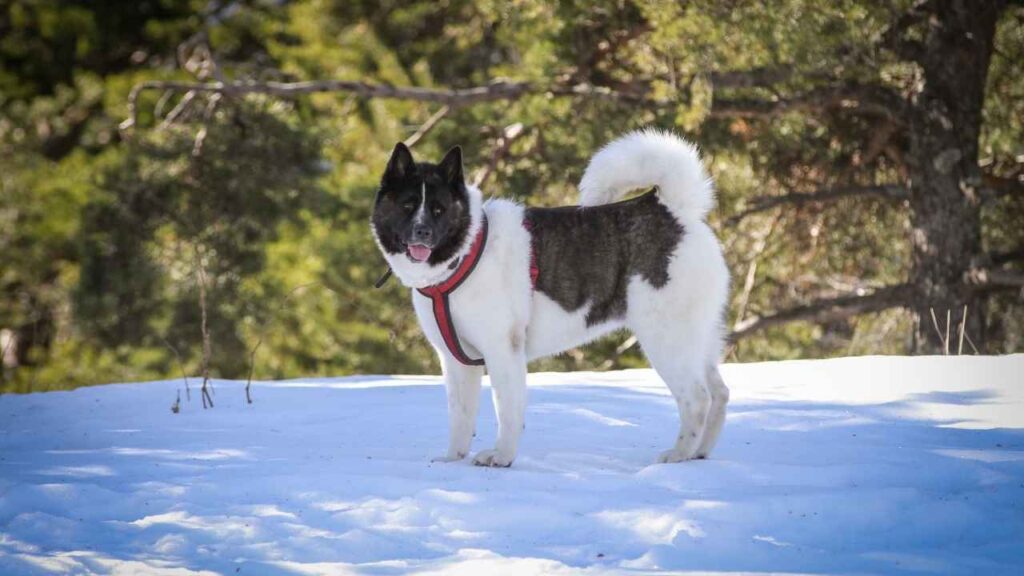
Exercise and mental stimulation are just as important as the Akita thrives on challenges. A secure yard is essential due to their jumping ability, and care should be taken in hot climates, as the breed is prone to overheating.
The Rottweiler is an active, muscular dog that requires daily exercise to stay fit and mentally stimulated. They enjoy walking, swimming, and working alongside their owners. Rottweilers excel in herding, obedience, tracking, and even cart pulling, making them highly versatile in dog sports.
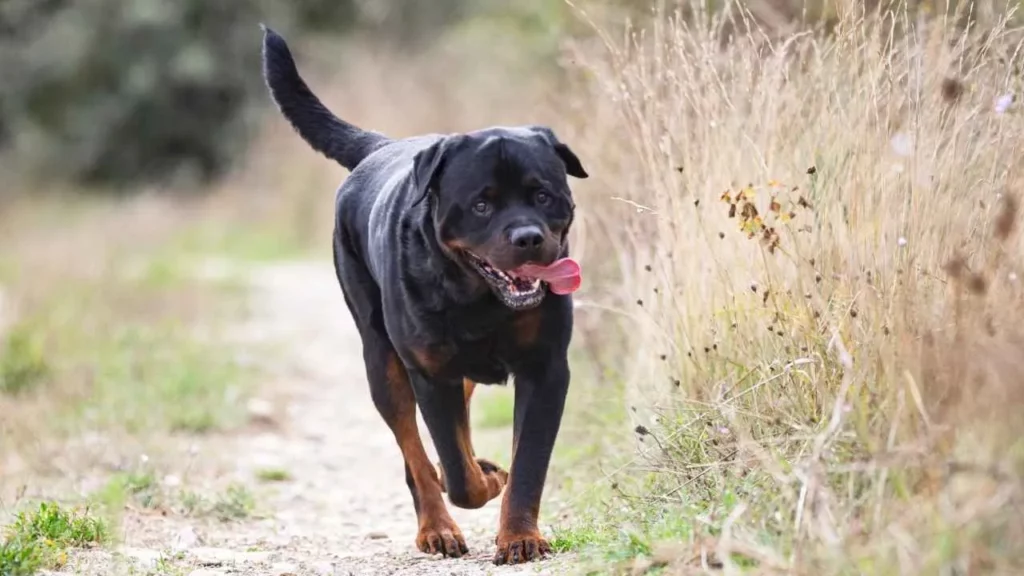
Regular activity also helps prevent weight gain, which can strain their strong frame. With the right outlets, Rottweilers remain balanced and content, states AKC.
Akita vs. Rottweiler: Barking Level
Akitas are generally quiet and not excessive barkers, though they do have aggressive tendencies, especially toward other dogs.
Rottweilers are also not known for frequent barking, typically staying calm and reserved unless provoked.
Conclusion
In the Akita vs Rottweiler comparison, both breeds are powerful, loyal, and protective—but they differ in temperament, trainability, and compatibility with other pets. Akitas are independent, reserved, and deeply devoted to their families. They require firm leadership, ongoing socialization, and are best suited to experienced owners.
Rottweilers are more responsive to training and generally easier to manage when properly trained. Their calm, confident nature makes them generally good family dogs when well socialized, though they can show dominance if not well trained.
Ultimately, both breeds demand commitment, consistency, and patience. Choosing between them depends on your experience, lifestyle, and ability to meet their physical and mental needs. With the right care, either dog can become a loyal and dependable companion.


